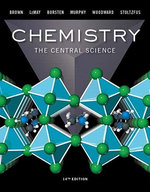?How many nonbonding electron pairs are there in each of the following molecules: (a) \(\left(\mathrm{CH}_{3}\right)_{2} \mathrm{~S}\),
Chapter 9, Problem 9.21(choose chapter or problem)
How many nonbonding electron pairs are there in each of the following molecules:
(a) \(\left(\mathrm{CH}_{3}\right)_{2} \mathrm{~S}\),
(b) HCN
(c) \(\mathrm{C}_{2} \mathrm{H}_{2}\),
(d) \mathrm{CH}_{3} \mathrm{~F}\)?
Text Transcription:
(CH_3)_2S
C_2H_2
CH_3F
Unfortunately, we don't have that question answered yet. But you can get it answered in just 5 hours by Logging in or Becoming a subscriber.
Becoming a subscriber
Or look for another answer
